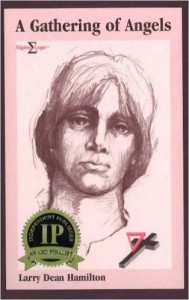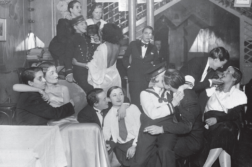Published in: July-August 2006 issue.
 A Gathering of Angels
A Gathering of Angels
by Larry Dean Hamilton
Sigma Logo Books, 205 pages, $19.95
A GATHERING OF ANGELS, by gay Texas poet Larry Dean Hamilton, relates a remarkable life story through a lyrical, sometimes dreamlike prose style. Although the work spans several decades, the focus is on the author’s coming of age and coming out experiences, largely in the underground gay world of Austin during the 1960’s. Essentially a personal memoir, the book is an impressionistic retelling of events that acquired their particular significance for the author from the vantage point of later life.






